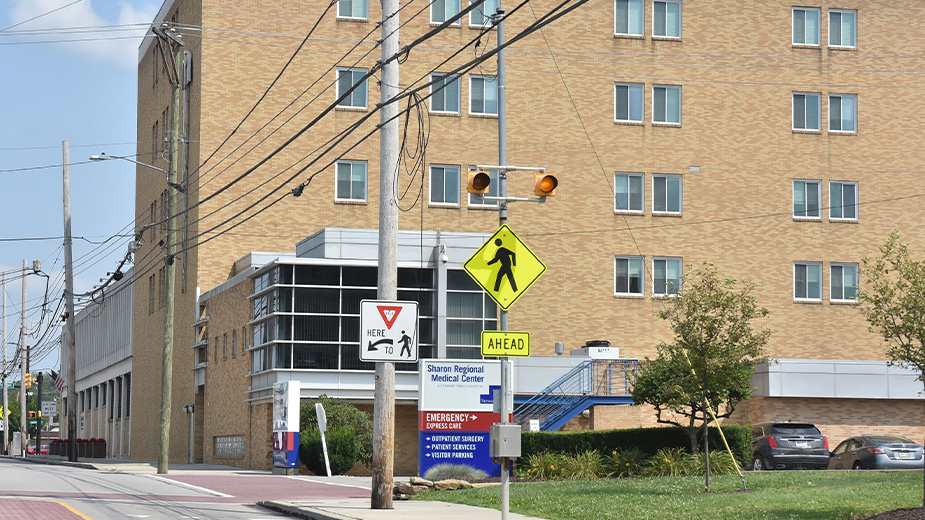‘Meet Them Where They’re At’ is Top Lesson for Memory Care
YOUNGSTOWN, Ohio – Working day in and day out with residents with dementia, Alzheimer’s disease or other memory-loss problems is by no means an easy task. But with training and education about the diseases more extensive than ever, senior care centers have made leaps toward providing the best care for such residents as possible.
“It’s different, even if you’ve worked with a geriatric population for years,” says Bethany Beshara, manager of special care unit at Mercy Health’s Assumption Village. “Dementia and Alzheimer’s are just so different from working with someone who can tell you what’s wrong or who can remember what happened. There have to be different approaches.”
The most important rule in memory care, she says, is to work at the resident’s level. Without the ability to create new short-term memories, they revert to a previous stage in their lives, whether it be five years ago or five decades ago. Trying to pull them into the present can cause problems.
“If someone’s asking for their mom, in their mind they are a child. You can’t come out and say, ‘Your mom isn’t here. You’re 80 years old,’ ” Beshara says. “We tell them, ‘She’ll be here later. She knows you’re here. She knows you’re safe,’ and then direct them to something they enjoy.”
At CrossRoads at Beaver Creek, Vicki Holden Shilot, the center’s president, refers to the method as “deflect and redirect.” When memory-care residents keep bringing up that their mother is visiting tomorrow, it’s often a repetitive thought without much substance to it, she says.
“They don’t really think she’s coming. You don’t encourage it, but you may say in a calming voice, ‘Is she? Well let’s go over here and have a cup of coffee while we wait,’ ” she says.
Both Beshara and Holden Shilot, along with CrossRoads wellness coordinator Kellie Williamson, administer the certified dementia practitioner certification.
The course covers the causes and symptoms of dementia, identifying and dealing with aggressive or repetitive behavior, alternate activity interventions and stress reduction techniques for caregivers.
The National Council of Certified Dementia Practitioners, which operates the courses, recommends memory care centers have at least one certified staff member on duty per shift.
At Assumption Village, Beshara works with her staff, relaying the information from the course, while at CrossRoads, Holden Shilot and Williamson use inter-shift meetings as a chance to educate nurses on how to best deal with memory-care residents if they’re having problems.
CrossRoads, based in East Liverpool, also requires staff to go through 10 to 12 hours of continuing education per year, about half of which is dedicated to working with residents with dementia. Part of that includes demonstrations, Williamson says, with staff and physical therapists playing the roles of memory care residents.
“You can tell someone how they’re supposed to do something, but if I sit down and a therapist shows me how to do it, it makes it more real,” she says.
But, they all agree, not everyone is cut out to work in memory care.
“We get a lot of repetition. You get asked the same question multiple times a day. And depending on where they’re at in the progression of the disease, their memory may only be 30 seconds,” Beshara says. “They can ask you something. You’ll answer. And then they’ll ask you again. You have to have patience and an understanding that they’re not doing this to upset you.”
Memory care also requires a bit of puzzle solving. With the loss of short-term memory, residents of senior care centers can’t always get their thoughts out in a way that caregivers understand, and some don’t communicate verbally at all.
“You have to be patient and give them time to process. We rely a lot more on clues than other units have to,” Beshara says. “When you have a patient that can’t speak who’s crying out, they’re crying out for a reason. You have to go through if they’re hungry or need to go to the bathroom and stay calm to let them know you’re going to help them.”
Being unable to communicate or interpret what residents are trying to get across can lead to a cycle of frustration, she says.
Memory care staff also have to be aware of the environment they’re in. As dementia progresses, residents lose their ability to filter out stimulus such as noise and light.
“They can’t filter it out. Right now, there’s all this sound outside the door. For a dementia patient, if that sound is there, they can’t focus on you,” Holden Shilot says. “When we walk back [to our memory unit], it’s quiet and tranquil. There’s a lot of natural light, which has been shown to be good for them. There are built-in night lights so they’re not confused if they get up at night.”
At True North Memory Care, the dedicated memory-care center at CrossRoads, residents are given their own rooms. An attached garden with a security fence allows them to get outside and tend a garden when weather allows. It has its own common area, with classic movies playing continuously on the TV.
“We don’t play anything new or any TV [shows] here,” Holden Shilot says, gesturing to a TV playing an old Shirley Temple movie. “It can sometimes be hard for them to separate it from what’s real.”
Having a same-site memory center also eases the burden on residents, Williamson says. As memory fades, it can be disorienting to move from a familiar site to one that’s far away and brand-new. Being able to move residents from one side of the building to another helps keep them calm.
“They get along in their room well and get up and get dressed and brush their teeth. But when they get outside and don’t know what to do, it’s too much,” she says. “That’s when they move to True North. It’s a smaller environment for them, less stressful. They thrive back there.”
At Assumption Village, Beshara says music therapy has helped. Residents are given iPods loaded with some of their favorite songs.
“It brings people out of their shells. … It’s something they relate to because it’s something they remember,” she says. “A lot of good has come out of these music and memory programs. It’s in their long-term memory and that’s what stays intact. It works in reverse order. The last things you learn are the first ones you lose.”
There are other ways to tap into that long-term memory, and family plays an important role. The certified dementia practitioner training also comes into play here. Dementia is a disease that affects all members of a family, so educating them can be equally important as treating the resident.
“A lot of this, too, is talking to families. It’s scary. You don’t understand this person you’ve known all your life. They’re slipping away from you,” Holden Shilot says. “What they try to do is [tell them], ‘No, Mom, you know Dad’s been dead for years.’ ”
Especially with family members who served as caregivers before their family member was moved into a memory care unit, guilt can be a common factor, Beshara adds.
“You see so much burnout because they don’t get a break. When they do finally go to a home, there’s some guilt. We want them to be able to come in and enjoy their visit,” she says, noting that part of that is developing activities.
One of the best activities, she says, is to find an old family photo album and bring it to the senior care center. With that, residents can tap into long-term memories, which help them keep calm and communicate with family.
“That long-term memory remains intact, so as you look through the album, those memories are clear. And a lot of times, the further back you go, the clearer it is,” Beshara says. “You can listen to your mom tell a story about her grandmother. It helps take that pressure off of figuring out what to talk about when she doesn’t remember.”
For everyone, whether they’re family or memory-care staff, the most important thing when working with those with dementia, Holden Shilot says, is to listen.
“Understand that if there’s some sort of disruptive behavior, it’s probably because there’s a need that’s unmet, whether they’re in pain or hungry or need to go to the bathroom,” she says. “It’s about listening, talking in a low voice and letting them try to get it out. We need to enter their world, not drag them back to ours. We need to meet them where they’re at and help them be successful.”
Copyright 2024 The Business Journal, Youngstown, Ohio.



